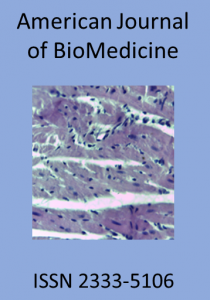
Abstract
The overall incidence of Echinococcus infection is 0.4 per 100,000 persons. Humans are an accidental intermediary host and can occur in any human organ or tissue, although most often found in the liver (60-70%) and lung (20-30%). Cardiac involvement of hydatid disease is uncommon (0.02-2%), and establishing a diagnosis is difficult because the presenting symptoms are variable and usually insidious but there is always the lethal hazard of cyst perforation. Early diagnosis and an integrated treatment strategy are crucial. A 49-year-old female was admitted to the emergency department with a complete antrio-ventricular block, computerized tomography of the cranium revealed a cystic mass located in the interventricular septum and interrupting both bundle branches. A cystic lesion 6.2 x 3.8 cm in size was detected on two-dimensional transthoracic echocardiography during the postoperative period. Open heart surgery was performed and a hydatid cyst was enucleated and medical therapy was started with albendazole. Whereas cysts in other organs may be treated both by chemotherapy and surgical manipulations, in the case of heart echinococcosis it is impossible to administer antihelmintic medicines prior to surgery due to the risk of cyst wall destruction and rupture. In addition the results of surgical treatment of heart echinococcosis are better than the conservative strategy.
Keywords: Echinococcus; Hydatid cyst; Heart; surgical manipulations
Copyright © 2015 by The American Society for BioMedicine and BM-Publisher, Inc.
References
- Onursal E, Elmaci TT, Tireli E, Dindar A, Atilgan D, Ozcan M. Surgical treatment of cardiac echinococcosis: report of eight cases. Surg Today 2001; 31:325-330.
https://doi.org/10.1007/s005950170153 - Perez-Gomez F, Duran H, Tamamer S, Perrote JL, Blanes A. Cardiac echinococcosis: clinical pictures and complications. Br Heart J 1973; 35:1326-1331.
https://doi.org/10.1136/hrt.35.12.1326 - Sirlak M, Ozcinar E, Eren NT, Eryilmaz S, Uysalel A, Enneli D, Ozyurda U. Multiple hydatid cystectomy of the heart necessitating LIMA to LAD anastomosis in a young patient. Cardiovasc Pathol. 2009;18(1):53-6.
https://doi.org/10.1016/j.carpath.2007.08.003 - Karabay O, Onen A, Yildiz F, Yilmaz E, Erdal CA, Sanli A, Kilci G, Algin I, Itil O, Açikel U. The case of a cyst hydatid localized within the interatrial septum. Jpn Heart J. 2004;45(4):703-7.
https://doi.org/10.1536/jhj.45.703 - Ipek G, Omeroglu SN, Goksedef D, Balkanay OO, Kanbur E, Engin E, Baskurt M, Kucukoglu S. Large cardiac hydatid cyst in the interventricular septum. Tex Heart Inst J. 2011;38(6):719-22.
- Eroglu E, Gemici G, Ergenoglu M, Yildiz C, Kucukaksu S, Degertekin M. Giant hydatid cyst of the interventricular septum mimicking acute myocardial infarction on ECG: an unusual cause of ST segment elevation. J Cardiovasc Med (Hagerstown). 2009;10(5):425-7.
https://doi.org/10.2459/JCM.0b013e328329335e - Tiseo D, Borrelli F, Gentile I, Benassai G, Quarto G, Borgia G. [Cystic echinococcosis in humans: our clinic experience]. Parassitologia. 2004;46(1-2):45-51.
- Steurer S, Auer H. Primary cystic echinococcosis in the subcutaneous gluteal region - a case report. Wien Klin Wochenschr. 2008;120(19-20 Suppl 4):101-3.
https://doi.org/10.1007/s00508-008-1039-9 - FA Rojo-Vazquez, J Pardo-Lledias, M Francos-Von Hunefeld, M Cordero-Sanchez, R Alamo-Sanz. Cystic echinococcosis in Spain: current situation and relevance for other endemic areas in Europe. PLoS Negl Trop Dis 2011; 5: e893.
https://doi.org/10.1371/journal.pntd.0000893 - Budke CM, Deplazes P, Torgerson PR. Global socioeconomic impact of cystic echinococcosis. Emerg Infect Dis 2006;12: 296-303.
https://doi.org/10.3201/eid1202.050499 - Pardo J, Muro A, Galindo I, Cordero M, Carpio A, et al. Hydatidosis in the province of Salamanca (Spain): should we let down our guard? Enferm Infecc Microbiol Clin 2005; 23: 266-269.
https://doi.org/10.1157/13074966 - Richter J, Orhun A, Grüner B, Müller-Stöver I, Reuter S, et al. Autochthonous cystic echinococcosis in patients who grew up in Germany. Euro Surveill 2009;14: 1-7.
https://doi.org/10.2807/ese.14.22.19229-en - Benito A, Carmena D, Joseph L, Martínez J, Guisantes JA. Dog echinococcosis in northern Spain: comparison of coproantigen and serum antibody assays with coprological exam. Vet Parasitol 2006;142: 102-111.
https://doi.org/10.1016/j.vetpar.2006.06.011 - Carmena D, Sánchez-Serrano LP, Barbero-Martínez I. Echinococcus granulosus infection in Spain. Zoonoses Public Health 2008; 55: 156-165.
https://doi.org/10.1111/j.1863-2378.2007.01100.x - Benner C, Carabin H, Sánchez-Serrano LP, Budke CM, Carmena D. Analysis of the economic impact of cystic echinococcosis in Spain. Bull World Health Organ 2010; 88: 49-57.
https://doi.org/10.2471/BLT.09.066795 - MM Wani, AM Durrani, M Shafi, M Wani, M Khan.Hydatid disease of the soft tssues of the lwer lmb: case report. JK-Practitioner 2007; 4:104-106.
- PL Moro, CA Cavero, M Tambini, Y Briceno, R Jimenez, L Cabrera. Identification of risk factors for cystic echinococcosis in a periurban population of Peru.Trans Ryl Soc Trop Med Hyg 2008;102: 75-78.
https://doi.org/10.1016/j.trstmh.2007.09.010
3. Purchase this article at rate $33.00
For any technique error please contact us
Who Can Become a Reviewer?
Any expert in the article's research field can become a reviewer with American Journal of Biomedicine. Editors might ask you to look at a specific aspect of an article,...
Research Article
DOI: http://dx.doi.org/10.18081/2333-5106/015-554-568
American Journal of BioMedicine 2015, Volume 3, Issue 4, pages 254-268
Received June 30, 2015; accepted September; 20, 2015, Published October 22, 2015
How to cite this article
Sánchez-Serrano T; Carmena PJ; Tambini M. Hydatid cyst of the heart: risk of heart block and cyst rupture. American Journal of BioMedicine 2015;3(4):254–26
Research Article
1. Abstract
2. Keywords
3. Introduction
4. Discussion
5. References


